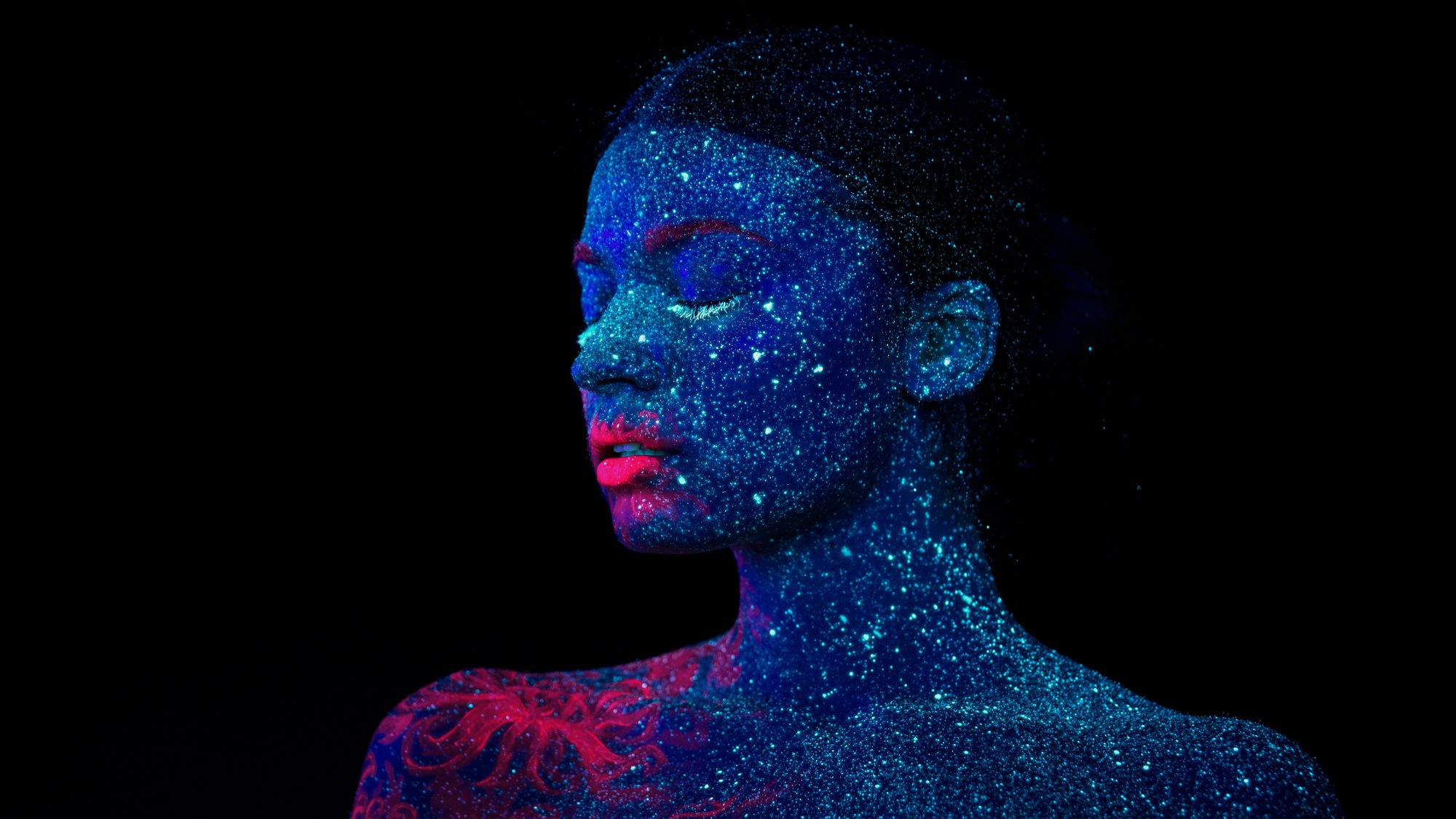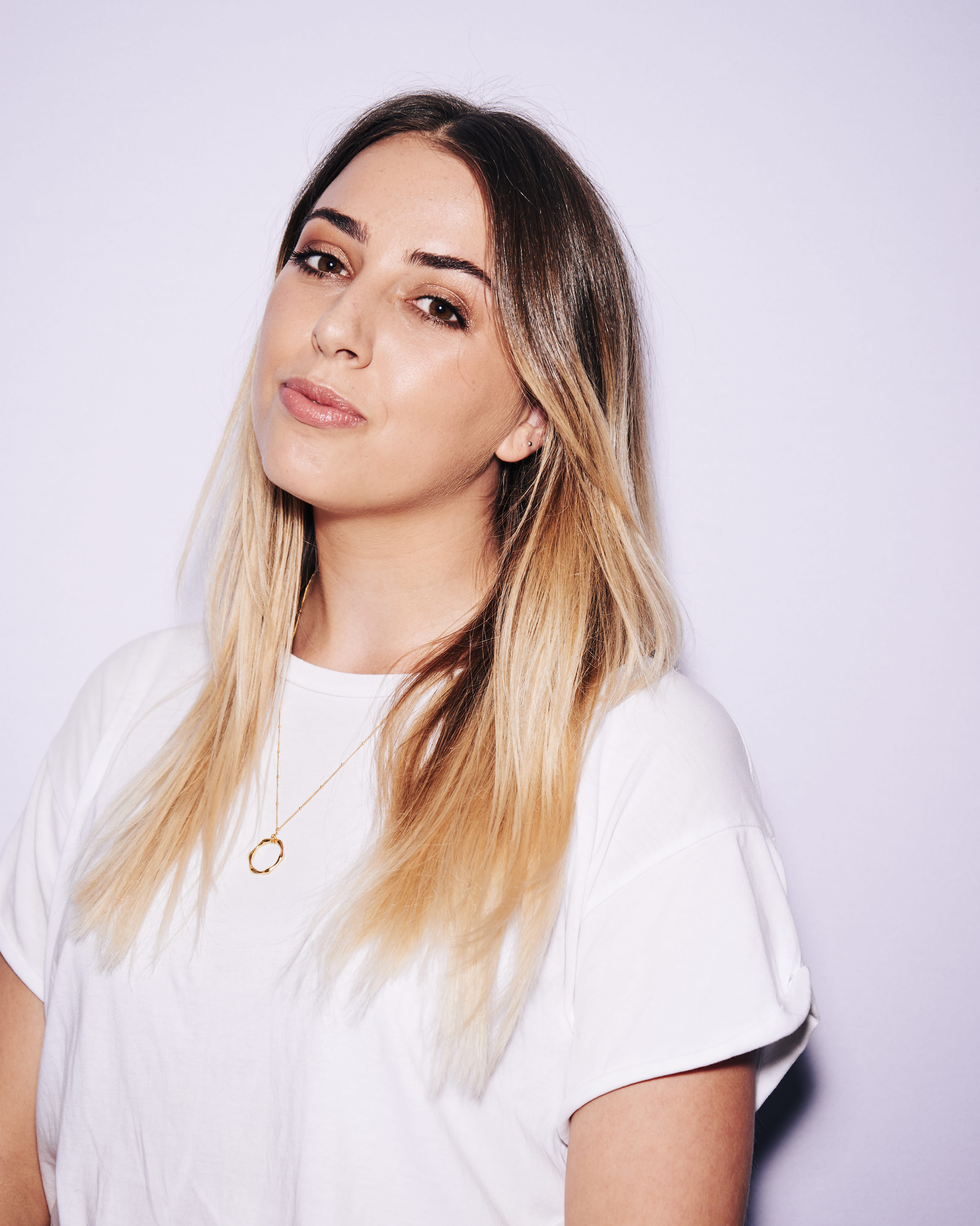If sunbeds are actually bad for us, why is everyone secretly getting them? Let's talk about it
It's time we talk about secret sunbed use openly. Marie Claire's Acting Senior Beauty Editor investigates...


Last month, I attended a beauty launch event as I do most days. I walked into a room full of my beauty-editor peers, beauty experts and beauty PRs who have been in the game for decades. As always, I circulated the room, making conversation with people as I went. "Have you been away?! Or are you wearing a fake tan?" I asked one long-time work friend. "You look so tanned," I added.
"Don't tell anyone," she whispered. "I've been hitting the beds."
I was, frankly, surprised by how candid she was. I'm not sure I've heard anyone in the industry openly admit to actively using sunbeds in well over five years. But it turns out, she isn't an anomaly. Over the course of the past few weeks, I've been grilling everyone I know who works in beauty on the topic. Turns out, a somewhat surprising number of people I know in this industry are using sunbeds. Sure, I know countless people outside of the beauty industry who get regular sunbeds, but as beauty professionals, we're closer to the dangers and risks, so there is a part of me that finds this shocking.
A post shared by Shannon Lawlor (@shannonlawlor)
A photo posted by on
And I want to make it very clear here that I'm not out to demonise anyone's choices. Your body is your own to do with as you please. Hell, I've been known to hop on a sunbed or two in the past and am the first to moan about looking pasty in the winter, so I'm in no place to judge. What this revelation has ignited in me, however, is a desire to understand why—why are so many of us keeping our sunbed usage a secret?
Ask any beauty insider and they'll tell you that sun safety is on the up. We all know to apply sunscreen to our faces every single day, rain or shine, in order to keep our skin safe and our complexions looking healthy. And truthfully, up until this moment, I had assumed that sunbed usage was on the decline—given that everyone knows the dangers of them.
So, I want you to know that this investigation isn't on the dangers of sunbeds—I'm not here to lecture you on what you already know. Instead, I've spoken to countless sunbed users about the reasons in which they use sunbeds, and reached out to the top dermatologists in the game to give their feedback in a bid to figure out where we go from here.
The secretive world of sunbed use
Before we get into the reasons in which people are using sunbeds (besides just getting a tan), I want to touch on the fact most people I spoke with are using sunbeds in secret. "I've never told anyone that I get sunbeds," one beauty insider told me. "People just assume my skin is naturally darker, but I've been getting sunbeds for years. I don't want people to know because I'm scared they will take me less seriously at work if I'm not leading by example."
Celebrity news, beauty, fashion advice, and fascinating features, delivered straight to your inbox!
And this speaks volumes. The truth is, sunbed use has become so full of shame that most people who use them are scared to admit it, through fear of being lectured or being called ignorant. While I've tried my absolute best to keep this investigation as balanced as possible, I do want to take this moment to highlight some of the top line dangers around sunbeds to demonstrate the reasons why people like to keep their habit a secret.
I don't want people to know because I'm scared people will take me less seriously at work if I'm not leading by example.
"The WHO has classified sunbeds as a group 1 carcinogen—this means they are proven to cause cancer," says Dr Emma Craythorne, consultant dermatologist and KLIRA Founder. "The UV index for a sunbed is around 13, which when compared to the hottest part of the summer at noon being around 8.5, it is clear to see the sheer increase in the amount of radiation hitting the skin," she adds.
And when it comes to skin cancer risk, the findings are unanimous. "I see it in the practice every day," says Dr Maham Khan, consultant dermatologist at the Cadogan Clinic. "Melanoma skin cancer is 16-25% higher in people who have ever used a sunbed (at any age). Melanoma skin cancer risk is 59% higher in people who first used a sunbed before age 35, compared to those who have never used one."
And it's true that even though all of the above information (along with the facts around increased skin ageing) is widely known and accepted, people are still getting sunbeds (and not telling anyone about it when they do). So, I spoke with over 30 sunbed users to determine what their reasoning is, and the results were surprising.
The pre-holiday burn dilemma
The most common reason people gave me for their sunbed use was to prevent burning or heat rash before going on holiday. And I'll admit, I still find this to be the most convincing argument for sunbed usage. As a beauty editor, I would like to make it clear that I don't condone anyone using a sunbed for any reason at all, but this is the one I could kind of, sort of reason with.
I've been using them quite often because I don't want to get fake tan on my wedding dress, but normally I only have a couple before holiday so I don't burn.
Beauty professional
The truth is, the biggest danger when it comes to tanning is the risk of burning. Sunburnt skin is a major warning sign that your skin has experienced cell and DNA damage. So, in theory, anything that prevents you from burning is a good thing. But there are a few major holes in this argument.
"If the skin does not get primed before going on holiday, some people think they will burn less easily—but this is only partly true," says Dr Craythorne. However, it's worth noting that it is not simply burning that increases your risk of skin cancer, it's the additional radiation.
"There is no such thing as a 'safe' tan," says Dr Khan. Although tanning your skin might, to some extent, prevent you from feeling and looking burnt, the damage is still being done. "A tan is a sign of skin damage. Getting a tan before going on holiday doesn't build any protection or resistance from UV radiation. The damage is caused by cumulative radiation over time," she says.
The recommendation? Use a high-factor sun cream instead. Chances are, you'll still tan to some extent even with a high-factor sun cream (although, of course derms don't recommend tanning at all)—you're just limiting the amount of UV radiation you're exposing your skin to.
Skin conditions and sunbeds
Think you need sunbeds to treat your eczema/acne/psoriasis? Apologies in advance because you're about to get schooled hard. People are always using the excuse that UV treatment is one of the most effective treatments of skin conditions—and they're not wrong. In fact, many people were desperate to tell me that sunbeds are found inside the UK's hospitals and are prescribed regularly for such treatments.
I use them (super rarely) because they're incredible for treating my psoriasis. I don't want to use steroids or go back on medication. I probably only use max 1-2 a month during winter, but the benefits to my physical and mental health outweighs the risks for me.
Beauty professional
Only, that's not strictly true. "We commonly use phototherapy with specific wavelengths of light like broadband and narrowband UVB to treat skin conditions like eczema, psoriasis, vitiligo and cutaneous T-cell lymphoma. However, there are major differences between phototherapy delivered by a team of health professionals and sunbeds," explains Dr Craythorne.
It's important to note here that the 'sunbeds' used in medical environments do also carry some risk. "It still carries a small skin cancer risk but not in the same way that shop sunbeds do. The medical sunbeds are monitored heavily for their radiation output, while a study by the British Journal of Dermatologists showed that 9 out of 10 sunbeds on the high street were not maintained at the expected safety level," says Dr Khan.
The UV radiation found in sunbed shops on the highstreet is far greater than those found in hospitals. So, if you're wanting to treat your skin condition and have found sunbeds have helped, go to your GP and enquire about phototherapy to make sure you're doing it safely.
The vitamin D debate
Compared to other places in the world, it's true that we in the UK have a harder time keeping our vitamin D levels topped up—our UV index is, on average, low. The most effective way for our bodies to produce sufficient vitamin D levels is by exposing our skin to UVB rays (they're the ones in the sun that cause our skin to tan and burn). And many people told me they like to use sunbeds to 'top up' their vitamin D levels. Again, this argument is somewhat flawed.
We simply don't get enough vitamin D here in the UK, and I feel so much better and healthier after a few minutes on a sunbed once in a while.
Beauty professional
"Exposure to any UVB can boost your vitamin D levels," says Dr Craythorne. "We only need about 10 minutes a day of normal sunlight to do this and not the high doses you get from sunbeds. You can also boost your levels through dietary sources without cancer risk. Vitamin D is never a viable reason to use sunbeds." Vitamin D can also be found in foods such as oily fish and dairy.
Sunbeds in moderation
"One every so often can't be so bad," one person told me. And while it's true that regular use of sun beds causes accumulation of UV radiation, the UV that we are exposed to in a single session on a sunbed is notable enough to cause damage in just one sitting.
I use them to stop burning pre-holiday and also when my skin is bad, one sun bed clears it up instantly. My feelings are one every so often can't be so bad.
Beauty professional
"The data clearly signifies that the cancer risk for both melanoma and non-melanoma skin cancer is significantly higher in people who have ever used sunbeds compared with 'sunbed-never' users. The potential harm caused by sunbed use is not solely determined by frequency but also by the intensity of UV radiation and its cumulative effect on the skin," says Dr Khan.
So what's the answer?
The truth is, sunbed use is bad for us—full stop. But you knew that already, didn't you? Both Dr Khan and Dr Craythorne told me the only alternative they're willing to recommend is fake tan, from a bottle. But almost everyone I spoke with told me that fake tan isn't good enough for them to change their minds. And I get it.
I live on them. It's really bad and no one knows. But I simply don't feel attractive without a tan. I like to look natural so that I don't have to wear make-up or bother with fake tan. It's sad but I feel like it's the only way.
Beauty Professional
Although fake tan formulas have come on leaps and bounds in recent years, the results are never quite the same. "I agree that bottle tan doesn't look the same," says Dr Khan. "But I think more people are realising that exposure to UV radiation from sunbeds and sunbathing is extremely detrimental to health. The perception of beauty is changing, and people want to live a healthy, long life," she says.
And this, I have to admit, is where I disagree. Yes, it seems that people are more aware of the risks around sunbeds but, from my experience, that doesn't mean anyone is willing to do anything about it. While, seemingly, more people are applying SPF to keep their skin safe in the sun, those same people are also getting sunbeds.
The problem, I think, lies in the fact that sunbeds have become so demonised (and rightly so, mind you) that everyone is scared to bring them up in conversation. The fact is: people want to look tanned—and this is where the real issue lies. Until we open up the conversation around sunbeds and have useful debates and discussions around our desire to have a tan, we will never move on.
"By promoting sun-safe behaviours and addressing the underlying motivations for tanning, it's possible to help individuals make healthier choices for their skin and overall wellbeing," summarises Dr Khan. And I wholeheartedly agree. So the next time someone compliments you on your tan, think about why your relationship with tanning is important to you. Until we stop tanning in secret and address the real issues, one of which is that a society steeped in colourism and sexism tells us we feel and look better with a tan (but that's a conversation for another day), things aren't going to change.

Shannon Lawlor is the Beauty Director at Who What Wear UK. With nearly a decade of experience working for some of the beauty industry’s most esteemed titles, including Marie Claire UK, Who What Wear, Glamour UK, Stylist and Refinery29, Shannon’s aim is to make the conversation around beauty as open, relatable and honest as possible. As a self-confessed lazy girl, Shannon has an affinity for hard-working perfumes, fool-proof make-up products and does-it-all skincare.